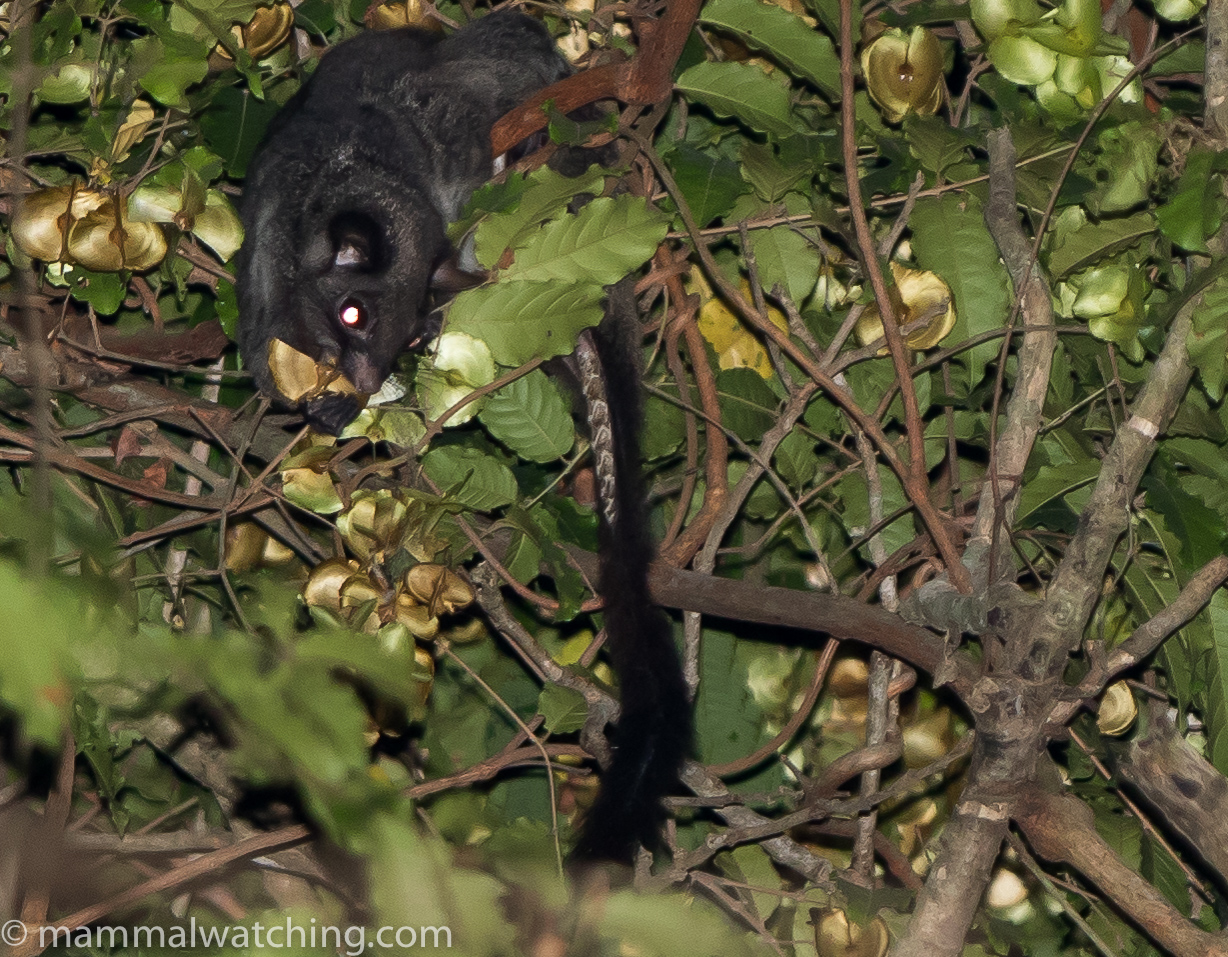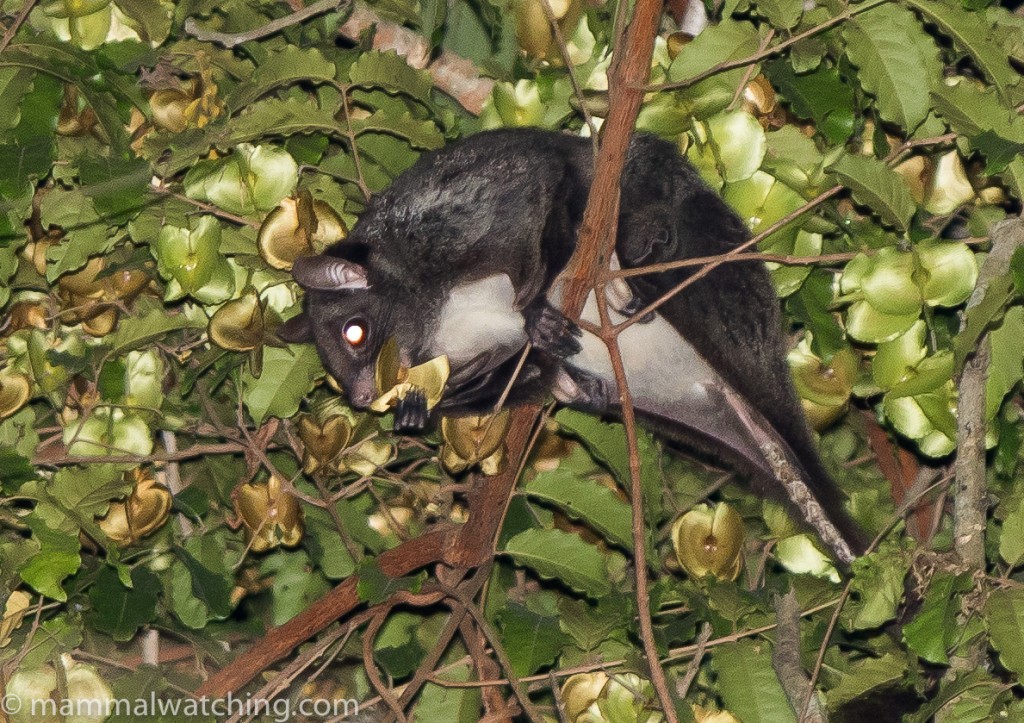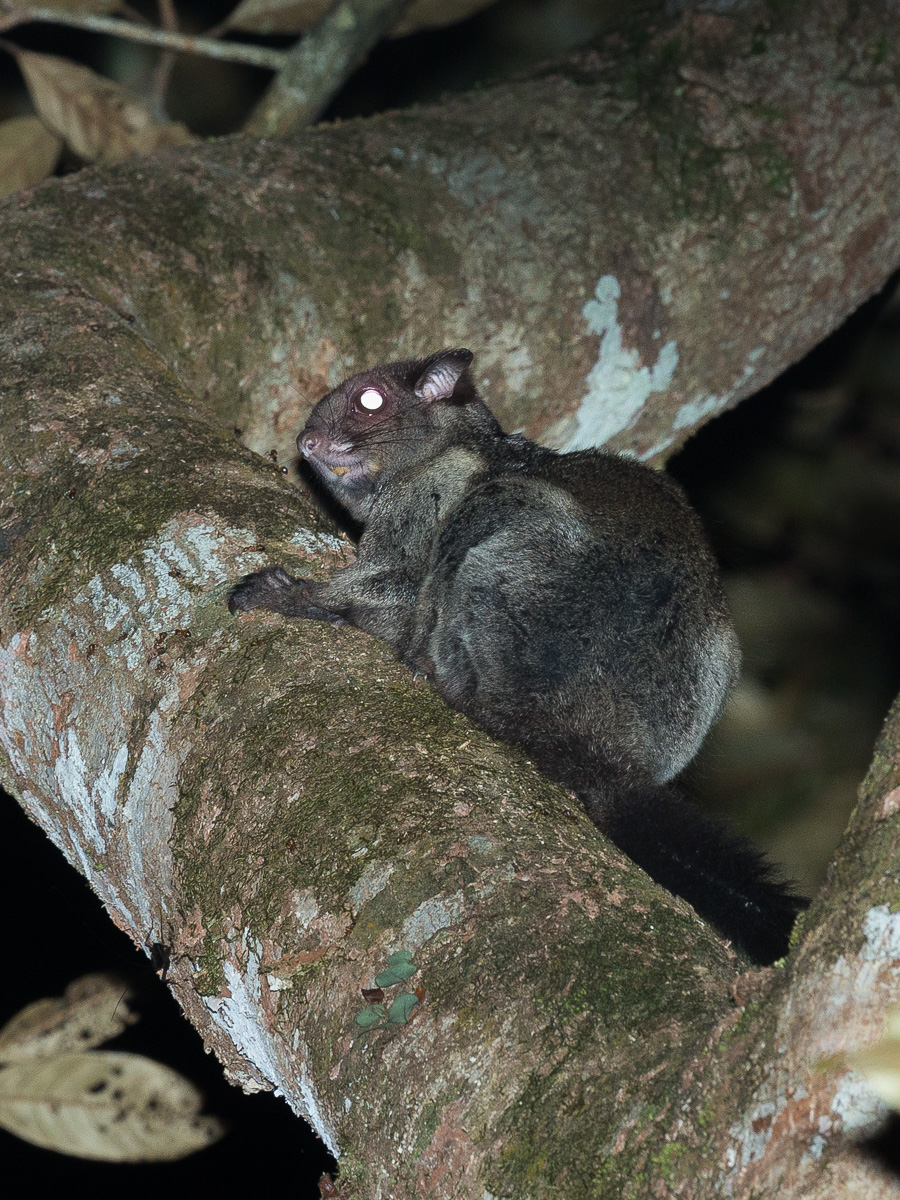Mystery Anomalure…

We had a long and photogenic encounter (unusual for Sierra Leone!) with an anomalure on Tiwai Island. But I am having trouble identifying it.
There is no record of Pel’s Anomalure within 300 miles of Sierra Leone so far as I can tell, but (based on what little I have been able to find on the web) this animal looks more like a Pel’s Anomalure than the other contender, Lord Derby’s. Although it does not have the jet black fur of the western Pel’s subspecies the tail looks much longer and bushier than that of any Lord Derby’s Anomalure I have seen pictures of, and the fur colour seems closer to Pel’s than Lord Derby’s too.
Note the western subspecies of Pel’s (closest in range to Sierra Leone) has a black, not a white tail, and lacks the white edge to the gliding membrane so the animal below looks more like this subspecies than the more dramatically coloured Pel’s Anomalures in Ghana for example. See this plate for the Handbook of the Mammals of the World
Moreover this animal has fur on the outside surface of its ears, while Lord Derby’s seems to have naked ears from what I can tell.
Any thoughts?

And the animal below was photographed in Gola Rainforest by Ben Schweinhart. This looks a little greyer and more “Derbyish” but still might well be Pel’s.

7 Comments
-
Vladimir Dinets
A. derbianus is supposed to have brownish-grey hands while A. pelii has black hands. Sure looks like you got A. pelii. Publish it (in Diversity & Distributions, for example).
-
AfriBats
Here’s a link to Jon’s observation on iNaturalist – I think it’s belongs to A. derbianus:
http://www.inaturalist.org/observations/5665756 -
Daan Drukker
Hi everyone,
This observation has been intriguing me for quite a while now. I am working on a field guide/ID document on the identification of squirrels and anomalures in West-Africa. It is almost finished now, but this specimen was the bottleneck for me, because how would you separate a black A. derbianus from A. pelii auzembergeri? Especially because by far not all derbianus have the dark mask as given by all the literature.
Looking at numerous photographs on Observation.org and iNaturalist, I found that there is another feature that all derbianus seem to have, so today I checked that with the specimens in the collection of Naturalis in Leiden (NL). I’ll publish that in more detail later, but I can tell you already that my suspicions were confirmed by all the specimens that were in o.k. condition that I have looked at:
All derbianus have a very dark patch behind the ear base (probably black in living specimens). None of the auzembergeri specimens have any form of similar contrast there, although sometimes it has some white hairs (so leaning towards the opposite as can be found in the other two subspecies of pelii). This black patch is part of the mask (as given by the literature) that surrounds eyes and ears, but it is also there when the rest of the (eye)mask is missing!Missing masks also occur in many other colour morphs, they don’t have to be as blackish grey as the one featured here. This means that I can only agree with Jakob Fahrs identification. Very cool record. Jon, may I use your photos for the field guide/document that I am working on? Of course with credit.
Cheers,
Daan
Leave a Reply
You must be logged in to post a comment.


tomeslice
It totally looks like the subspecies you pointed out of Pel’s Anomalure…
The only other one that I found from pictures that kind of looks like it is Anomalurus pusillus…?
Either way, great pictures of a cool creature!
Tomer